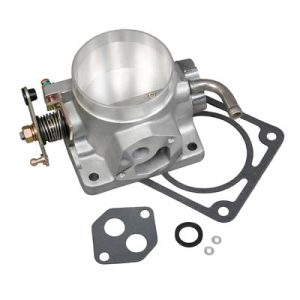

Give us a call: 33 for pricing, and upgrade options. Thrust specific fuci consumption (TSFC), installed, k/N hr (Ib/lbf hr). 567(1250) selected as the engine for the baseline aircraft. Note: Flow sheet provided for your heads. As a result it was Total engine airflow, kg/s fib/s). To achieve excellent improvements in torque and power.Ĩ Thread Spark Plug ‘Timeserts’ - If Needed We have CNC programs for ’99 and newer 4.6L two valve heads (PI heads) and 5.4L Lightning two valve heads.

Had we run this same test on a 392, 426 or 440-inch Hemi stroker with even wilder cam timing, the power gains would be even more substantial.Total Engine Airflow can CNC port and upgrade the valve-train components on your OEM heads. 6- 370cfm intake 273 exhaust at.7 390cfm int-281 exhaust. On this stroker, the ported heads were worth 41horsepower. This is the website print out for what I consider race head 18-degree heads. After installation of the ported heads, the peak numbers jumped to 527 horsepower at 6,500 rpm, and 451 lb-ft of torque at 5,500 rpm. Equipped with the stock (as-cast) heads, the stroker produced 486 horsepower at 6,500 rpm, and 426 lb-ft of torque at 5,200 rpm. This test was run with the same stock and ported heads used on the smaller 5.7 in test one. 589-inch lift (both intake and exhaust), a dual-pattern, 239/247-degree duration split, and 114-degree LSA. The 5.7 stroker was equipped with a custom Comp hydraulic-roller cam that offered. View Total Engine Airflow (location in Ohio, United States, revenue, industry and description. This combination nearly matched the displacement of the larger 6.1, but with a different bore/stroke combination (the 6.1 combined the smaller 3.578-inch stroke with a larger 4.055 bore). The combination of the 3.795-inch stroker crankshaft and 3.937-inch (.020-inch over) bore, resulted in a final displacement of just under 370 inches.

This engine started life as a 5.7, but was upgraded using a Scat stroker crankshaft and rods, teamed with a set of forged pistons from Probe Racing. Test engine number two was considerably more powerful than the mild 5.7 used in test one. The ported heads improved the power output slightly, to 413 horsepower at 5,700 rpm, and 439 lb-ft of torque at 4,600 rpm, but it was another case of the mild combination holding the heads back. The question now was would the mild engine be able to take advantage of the extra head flow when it was making only 400 horsepower? The answer was not really, as the stock heads were already sufficient to support the current power level. The improvement in airflow offered by the porting from TEA was significant, as the ported heads flow enough to support over 650 horsepower. Flow numbers for the 6.4 Apache heads are said to reach 340 cfm, a big number even for ported 5.7 heads, as our ported early castings from Total Engine Airflow (TEA) checked in at 329 cfm. All of the later heads offer significantly more flow in as-cast form, with each easily exceeding 300 cfm. The early 5.7 heads we tested, offered the lowest stock flow-rates of the bunch, topping out at 269 cfm at. Buy a discounted Paperback of Practical Engine Airflow online. Dodge now offers four different Hemi heads, the early 5.7 (like the ones we tested), the 6.1, the later 5.7 Eagle, and the 6.4 Apache heads. Booktopia has Practical Engine Airflow, Performance Theory and Applications by John Baechtel.


 0 kommentar(er)
0 kommentar(er)
